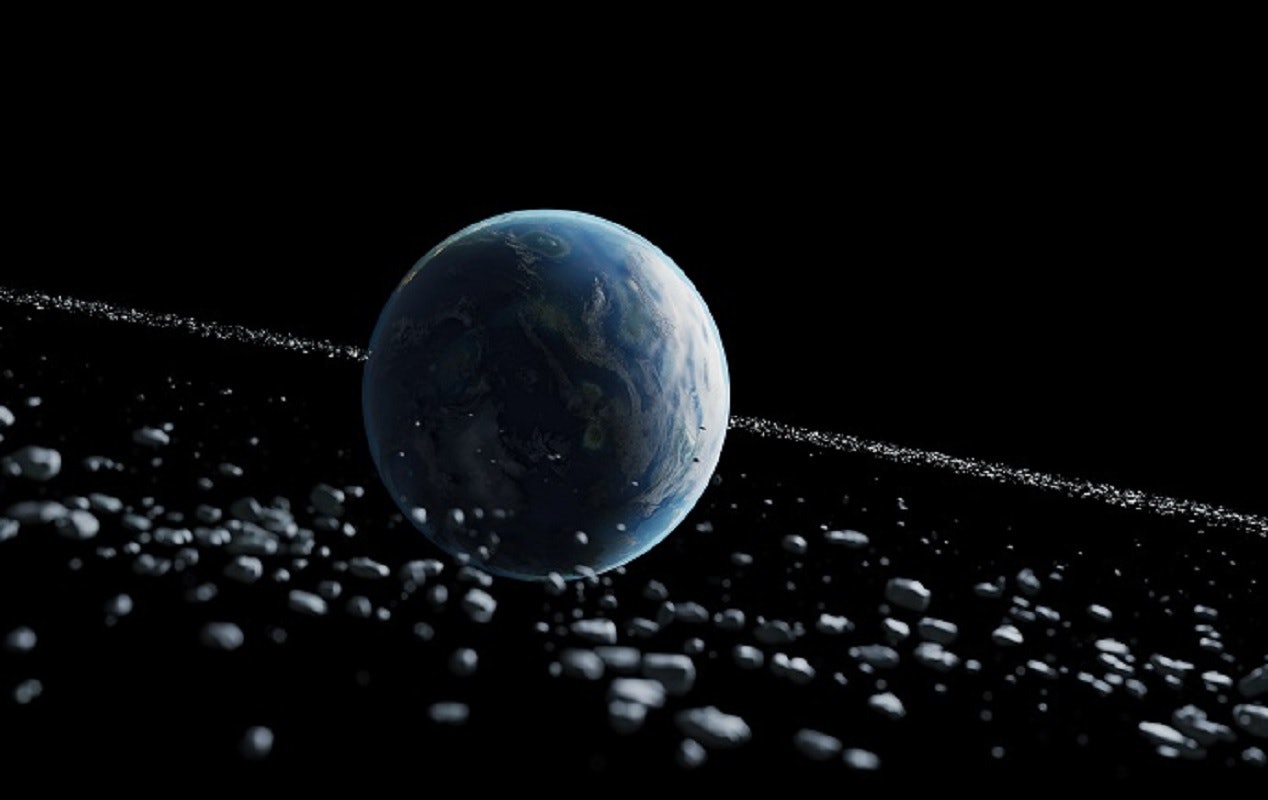
Jupiter, eat your heart out. Our planet may have ripped apart an asteroid and worn its scattered debris as a ring for a while.
466 million years ago, Earth was an alien world. Trilobites swam through the world’s first coral reefs, alongside strange, armored fish without jaws. And high above the alien seas, a slowly crumbling ring of rocky debris circled our planet’s equator, occasionally raining meteors on the ground below. That’s all true if Monash University geologist Andrew Tomkins and his colleagues are correct about the origins of 21 ancient meteor craters, that is.
The researchers published their work in the journal Earth and Planetary Science Letters.

1 in 25 Million Odds
When Tomkins and his colleagues reconstructed what the constantly-reshuffled puzzle of our planet’s surface looked like 466 million years ago, they noticed that a series of 21 meteor craters from an event called the Ordovician Impact Spike all lined up along the ancient equator. They also found a sharp increase in material from a common type of asteroid mixed in with limestone layers formed during the same period. According to Tomkins and his colleagues, the craters and the asteroid debris are all that’s left of a ring that once adorned our planet.
The Ordovician Impact Spike was a 40 million year period when more meteors than usual bombarded Earth, but, strangely, they all seemed to land in the tropical latitudes close to the equator instead of crashing into random spots on the globe. Tomkins and his colleagues calculate the odds of that happening at about 1 in 25 million, or, in their words, “highly unlikely.” Clearly something unusual was happening to our planet (above and beyond how unusual our planet itself was at that point).
Tomkins and his colleagues’ 1-in-25-million odds only apply if the meteors that formed these 21 craters had come from the asteroid belt. But if they came from closer to Earth — say, from a ring of debris encircling the planet’s midsection — then it would make much more sense for them to fall to Earth near the equator as their orbits, one by one, decayed and the ring crumbled.
Planetary rings are gorgeous, but they’re also the aftermath of violent destruction. Many of Saturn’s iconic rings are the shredded remains of moons that ventured too close to the gas giant and got ripped apart by its powerful tidal pull. And Tomkins and his colleagues say the same thing probably happened to an asteroid that passed too close to Earth, inside what’s called the Roche Limit. Our planet’s gravity ripped the asteroid apart and strung its guts as a necklace, basically.
Based on the number and size of the craters, Tomkins and his colleagues estimate that the asteroid that formed Earth’s ring must have been about 7 miles wide. And over the next 40 million years or so, the ring slowly fell apart as the debris chunks’ orbits decayed, occasionally raining huge rocks down on the tropics below.
One Ring to Cool Them All?
If Tomkins and his colleagues are right, the ring may have been more than a stylish, if slightly ghoulish, accessory. It may also have altered Earth’s climate for around 40 million years, triggering what geologists and paleontologists call the Hirnatian Icehouse period: a worldwide drop in average temperature of around 8 degrees Celsius. The Hirnatian Icehouse put a strain on all the strange plants and animals of the Ordovician seas, but life, uh, finds a way, and in this case the cold snap seems to have led directly to a dramatic increase in biodiversity as species found new ways to adapt and evolve.
The ring, according to Tomkins and his colleagues, may have been dense enough and wide enough to stretch its shadow over the hemisphere tilted away from the Sun during winter, leading to cooler winters — and a bigger difference in temperature between winter and summer. As chunks of the ring began falling out of the sky, the dust kicked up by their impacts may also have blocked the Sun, deepening the chill. Tomkins and his colleagues say this could “[solve] the puzzle of why such intense cooling happened despite high atmospheric carbon dioxide.”
Climate simulations, along with computer models of asteroid orbits, will help test the idea.







